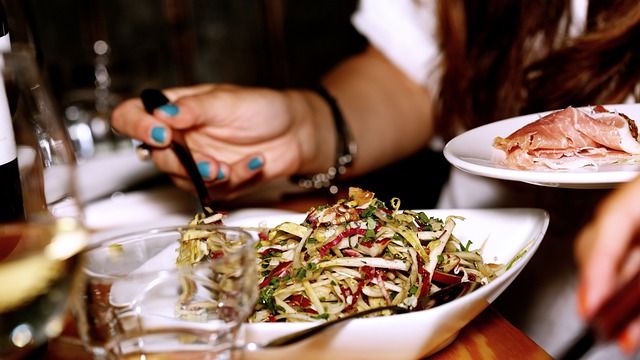In the ever-evolving landscape of culinary arts, chefs are constantly pushing boundaries and redefining traditions. One fascinating trend that has emerged in recent years is the fusion of diverse culinary traditions. This blending of flavours, techniques, and ingredients from various cultures has led to the creation of unique and exciting dining experiences that captivate the palate and ignite the imagination. In this article, we delve into the world of fusion cuisine, exploring how chefs are embracing diversity to craft unforgettable gastronomic adventures.
Exploring Culinary Diversity
The culinary world is a melting pot of cultures, each with its own distinct flavours and cooking styles. From the aromatic spices of India to the delicate sushi of Japan, and the fiery heat of Mexican cuisine, the range of flavours and ingredients is vast and diverse. Traditionally, these culinary traditions have been kept separate, with chefs adhering strictly to the techniques and ingredients of their respective cultures. However, a new generation of chefs is breaking down these barriers, blending elements from different culinary traditions to create innovative and boundary-pushing dishes.
Inspiration from Global Travel
One of the driving forces behind the rise of fusion cuisine is the increasing globalization of our society. Chefs today have access to a wealth of ingredients from around the world, thanks to advances in transportation and trade. Moreover, many chefs have had the opportunity to travel extensively, experiencing first-hand the rich tapestry of flavours and culinary traditions that exist across the globe. These experiences serve as inspiration, influencing chefs to experiment with new ingredients and techniques in their own kitchens.
For example, a chef who has spent time in Southeast Asia might incorporate elements of Thai, Vietnamese, and Indonesian cuisine into their dishes, creating a fusion of flavours that is both familiar and exotic. Similarly, a chef with roots in Latin America might draw inspiration from the vibrant street food scene of Mexico City or the sophisticated culinary traditions of Peru, blending these influences with their own cultural heritage to create something entirely new.
Breaking Down Cultural Barriers
At its core, fusion cuisine is about breaking down cultural barriers and celebrating diversity. By combining elements from different culinary traditions, chefs are able to create dishes that transcend cultural boundaries and appeal to a global audience. This cross-pollination of flavours and techniques not only results in delicious food but also fosters a greater appreciation for the richness and diversity of world cuisines.
Moreover, fusion cuisine can serve as a platform for cultural exchange and dialogue. Through food, chefs are able to tell stories and share experiences, offering diners a glimpse into different cultures and traditions. This can help to foster understanding and empathy, bridging divides and bringing people together in celebration of our shared humanity.
Innovative Techniques and Ingredients
One of the most exciting aspects of fusion cuisine is the opportunity it provides for experimentation. Chefs are constantly pushing the boundaries of what is possible, using innovative techniques and ingredients to create dishes that are as visually stunning as they are delicious.
For example, molecular gastronomy—a culinary movement that combines science and cooking—has opened up a world of possibilities for chefs looking to push the limits of flavor and texture. By manipulating ingredients at a molecular level, chefs are able to create dishes that defy conventional expectations, such as foams, gels, and spheres infused with unexpected flavors.
Similarly, the use of non-traditional ingredients has become increasingly common in fusion cuisine. Chefs are incorporating ingredients like miso, kimchi, and yuzu into dishes that would traditionally be considered European or American, adding depth and complexity to familiar flavors.
Cultural Sensitivity and Respect
While fusion cuisine offers endless opportunities for creativity and innovation, it is important for chefs to approach this style of cooking with sensitivity and respect. It is essential to honour the cultural origins of the dishes and ingredients being used, rather than appropriating them for the sake of trendiness.
Chefs should take the time to learn about the cultural significance of the ingredients they are working with and understand the proper techniques for preparing them. Additionally, collaborating with chefs from diverse backgrounds can provide valuable insights and ensure that the resulting dishes are authentic and respectful of their origins.
Furthermore, chefs should be mindful of the impact that their culinary creations may have on the communities from which they draw inspiration. This includes considering issues of sustainability and ethical sourcing, as well as supporting local farmers and producers whenever possible.
In a world that is increasingly interconnected, fusion cuisine serves as a reflection of our global society, celebrating the diversity of cultures and traditions that make up the fabric of human experience. Through creative experimentation and a spirit of openness and collaboration, chefs are breaking down barriers and redefining what it means to create unforgettable dining experiences. Whether it’s a fusion of flavours from opposite sides of the globe or a blend of traditional and modern techniques, fusion cuisine offers a tantalizing journey for the taste buds and a celebration of the rich tapestry of culinary traditions that unite us all.

